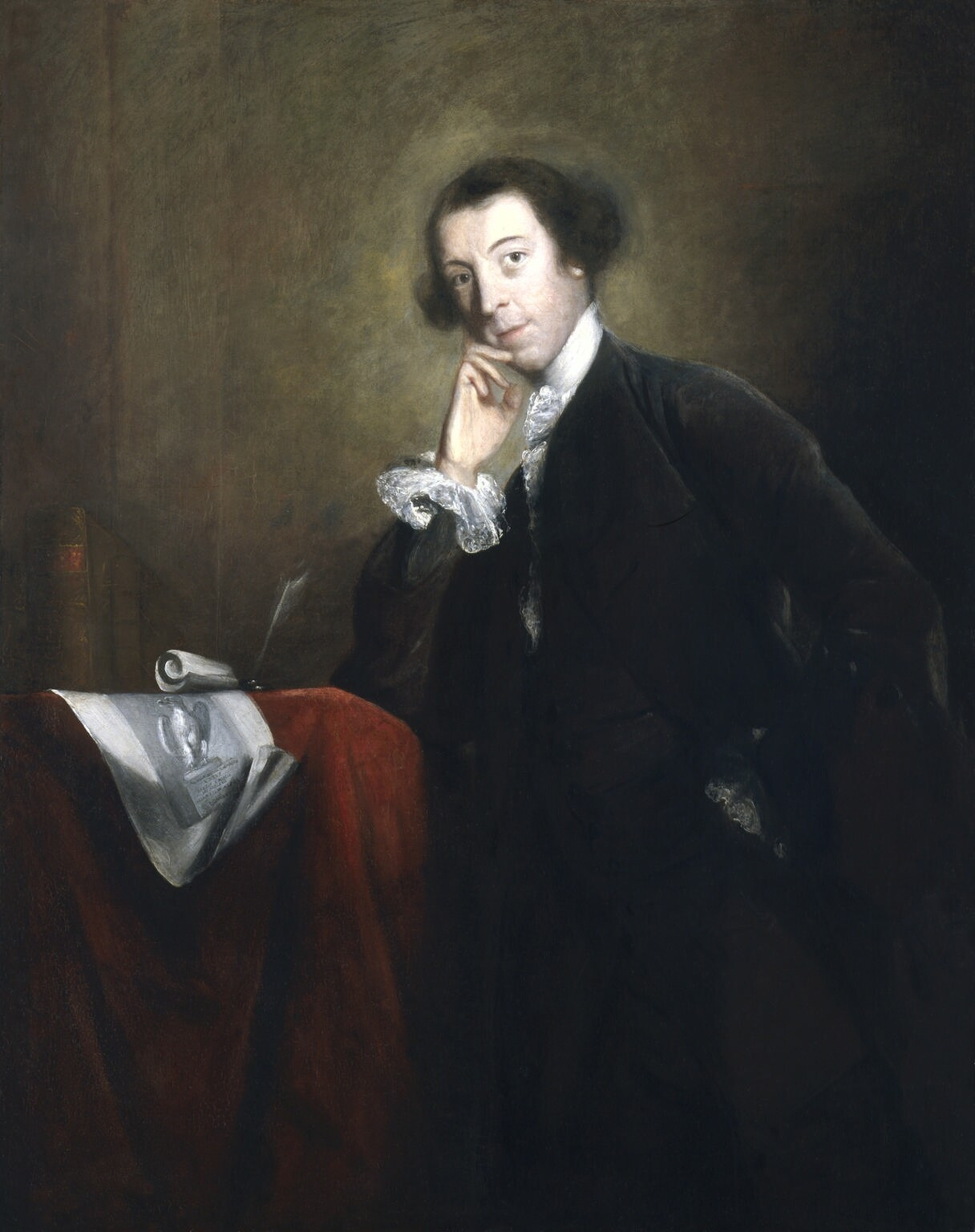Strawberry Hill
I’m sitting on a chair, basking in the warm October sunshine on a lawn outside an eccentric eighteenth century vision on a mediaeval gothic castle, drinking a pot of tea and listening to the chatter some coach party. Life does throw up the odd surprise now and again.
I am at Strawberry Hill, the building adapted and built by Horace Walpole, leader of fashion, writer of very bitchy letters and son of the first prime minister. It’s a nutty place, built according to his whims and fantasies, a fake ancestral castle utilising as many details from gothic architecture, at that point a very unpopular style compared to the Augustin style with its clean lines and symmetry. The house is a study of unsymmetry and it stands, beautiful and ludicrous in Twickenham, just on the south-western outskirts of London. In building this strange hobby, Walpole prompted the gothic revival and in writing about it, he wrote The Castle of Otranto the first gothic novel (and a very odd book indeed). So I have come to visit it.
I still have time before I go in, so I take a wander around the garden where I am attracted to a bench in the shape of a shell, a reconstruction of one of Walpole’s own creations and a famous piece of design in it’s own right. I sit on it and find it a bit of a let down, carved in cheap wood and smearily painted, it looks like something Laurence Llewellyn-Bowen would have built in changing rooms. The fact that it is stained in bird crap and covered in ladybirds makes it a little unnerving, but I sit there anyway.
Despite this, sitting on a clean part of the bench and looking back at the bench I am left with a feeling of utter pleasure. The details of the house are castle-esque, There is a round tower and a conical one, there are cloisters and crenellations, but the scale is wrong. Looking at the trees towering over the castle or the size of the people against it’s arched windows reveal that it is not much taller than a typical London townhouse, although takes up rather more space. It is a large villa, but a teensy castle and the clearly designed nature of the place reminds me of a building in a theme park, a sort of ‘King Arthur Land’ or something, although with much more charm. Strawberry Hill is not a corporate place (I had to remind them to charge me for my tea), what’s more it still feels what it originally was, the whimsy of a creative man of extensive means having a bit of a muckabout.
When it’s my turn to go in, I am led into a room with a video explaining the background of the house and I am given a little booklet, that reproduces an abridged version of Walpole’s own description of the house, allowing the man himself to lead you through. There are also guides in every room who are very enthusiastic and informative. Indeed, the guides were great, pointing out details I might have missed, like the elaborate Queen Anne lock in the blue room and explaining the tasks of the ongoing and extensive restoration continuing on the house. Some of the previous owners made odd choices, covering eighteenth century painted tromp-l’oeil wallpaper with 80s pink patterns and anaglypta.
The first room is the hallway, it is dark and dingy, there is a staircase going up and a single large lantern hanging from the top. The lantern is decorated in stained-glass, as are a lot of the windows. The stained glass is one of my favourite elements in the building, partly because of the way the glass dapples the light and partly because of the way the glass was obtained. Walpole ordered a job lot from Holland, and they arrived, assorted bits of mismatched stained glass dating back to the 1500s and depicting all sorts from trading to saints. Walpole then went around, arranging the glass in different ways until it fit his wish. There is one room where the corners all featured birds, another features King Charles the first and second. All the glass in the house is worth a closer look.
At the top of the stairs, where Walpole dreamed of a giant fist, a dream that started his novel, there is his library. It is wonderful, the closest thing to The Beast’s library it might be possible to have in a suburban villa and has grand arched bookcases. Impressively the bookcases open, so the books behind the arches can be retrieved. Unimpressively, the collection was sold off and there are actually no books in the library. There is a huge painting on the ceiling, not touched since it was first painted but bright and vivid and a special locked bookcase where Wapole kept the books he printed in his own private press in Strawberry Hill.
After the library, there is this wonderful dark corridor, lined in ridges of wood to make it feel like you are in a drum and left into the long gallery. A beautiful room in red damask and loads and loads of gilt. Indeed, gilt and grandeur summarise the other rooms in the house.
In summary, I highly recommend a visit to anyone with a few hours to spend enjoying the details and humour of the building, and learning a little about a very odd and wonderfully creative man....he also had an extra overspill library, and I can't help but love a man with one of those.
All yours




